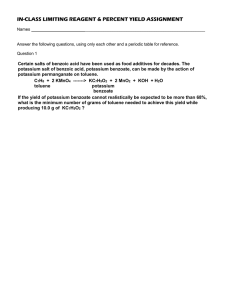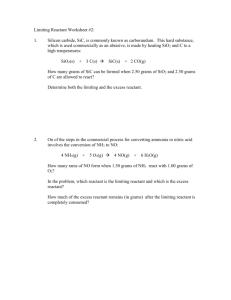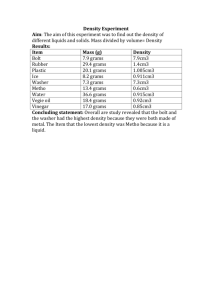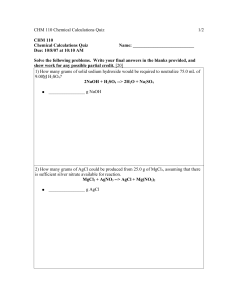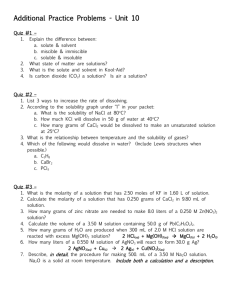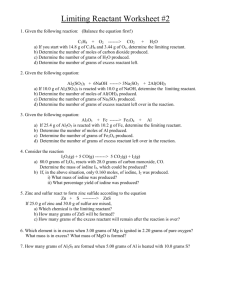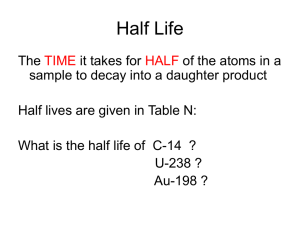Limiting Reagents Worksheet
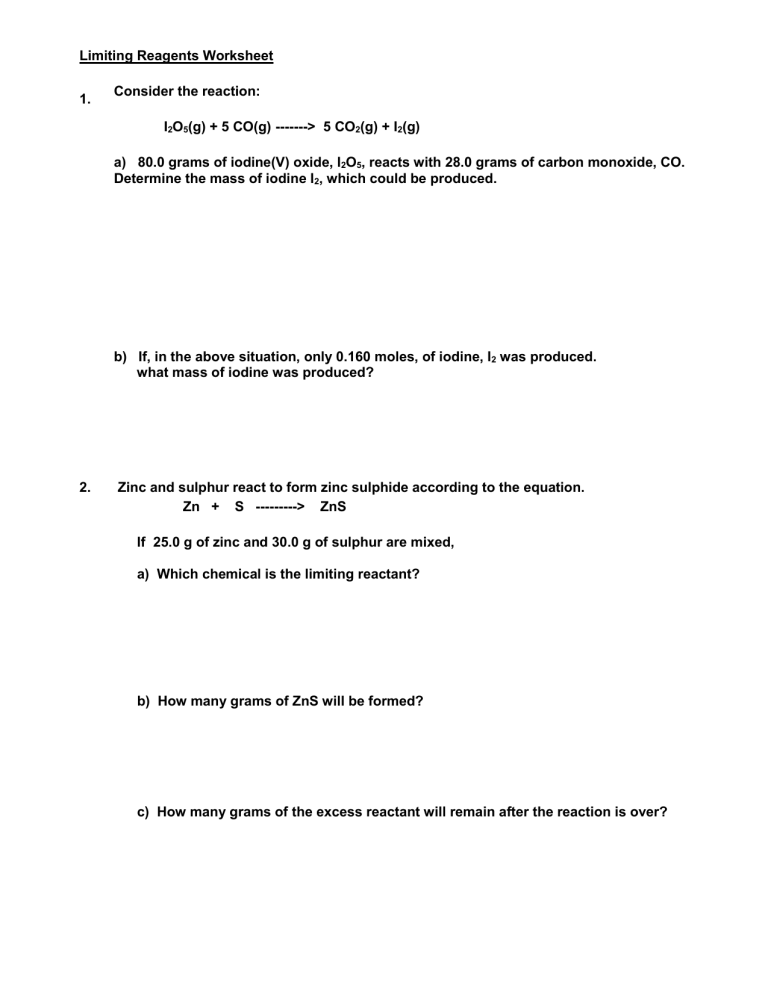
Limiting Reagents Worksheet
1.
Consider the reaction:
I
2
O
5
(g) + 5 CO(g) -------> 5 CO
2
(g) + I
2
(g) a) 80.0 grams of iodine(V) oxide, I
2
O
5
, reacts with 28.0 grams of carbon monoxide, CO.
Determine the mass of iodine I
2
, which could be produced. b) If, in the above situation, only 0.160 moles, of iodine, I
2
was produced.
what mass of iodine was produced?
2.
Zinc and sulphur react to form zinc sulphide according to the equation.
Zn + S ---------> ZnS
If 25.0 g of zinc and 30.0 g of sulphur are mixed,
a) Which chemical is the limiting reactant?
b) How many grams of ZnS will be formed?
c) How many grams of the excess reactant will remain after the reaction is over?
3.
Which element is in excess when 3.00 grams of Mg is ignited in 2.20 grams of pure oxygen?
What mass of MgO is formed?
4.
Silver nitrate, AgNO
3
, reacts with ferric chloride, FeCl
3
, to give silver chloride, AgCl, and ferric nitrate, Fe(NO
3
)
3
. In a particular experiment, it was plannned to mix a solution containing 25.0 g of AgNO
3
with another solution containing 45.0 grams of
FeCl
3
. a) Write the chemical equation for the reaction. b) Which reactant is the limiting reactant? c) What is the maximum number of moles of AgCl that could be obtained from this mixture? d) What is the maximum number of grams of AgCl that could be obtained?
d) How many grams of the reactant in excess will remain after the reaction is over?
